The following is the story of how I (almost) got stuck in Colombia and a documentation of my observations while traveling home during the coronavirus pandemic.
You know how you travel to a place that’s so beautiful and perfect, and you wish you could stay there forever? I’m in that place, and I’m in that situation. Yet I’m leaving it.
If I came to Minca, Colombia under different circumstances, I would have been dreaming for an excuse to stay here forever. Or at least for a few months. I have it, but I’m not taking it.
As I write this, laying in a hammock, an early morning breeze pushes me in my colorful cocoon.
Green is everywhere; so many different types of trees found home here. From the hammock’s viewpoint I see mango trees and palm trees and bamboo trees and other trees I wish I knew the names of.
This area is known for its diverse gathering of birds, and I can hear and occasionally see them. The guides on the bird watching tour I took yesterday said the uglier the bird is, the prettier it sounds.
The birds singing around me right now must look very ugly.
My hostel dorm is to my right, connected with a small, aesthetic kitchen and clean bathroom. (With a hot water shower: a rare commodity in Colombian hostels.)
At the bottom of the hill lies a yoga spot next to the rustic bonfire and BBQ area. And down below lies a clear river, perfect for cooling off in on hot days.
In short, this peaceful, beautiful place is ideal for staying in quarantine, just writing and relaxing all day.
Table of Contents
So why am I leaving?
Yesterday (Thursday), I found out that in two days (Sunday), all international airports and borders in Colombia will be closed until May 30. If I stay, I will be stuck in this paradise for over two months. At least. EDIT: The borders were closed much longer. I’m so glad I left when I had the chance.
So, I’m flying home tomorrow (Saturday).
Minca is a small town. The nearest city is a 45-minute drive on a winding mountain road running in the direction of the Caribbean, and in a wider perspective, home.
My intention was to stay here a few weeks until things died down. I’d probably be able to stay the two months until May 30, too.
But the fact that I’ll be stuck in the country with closed airports freaks me out. It’s one thing choosing to stay in a beautiful place for two months, but it’s a completely other not being able to leave.
This realization will forever change the way I look at long-term travel.
Also, while remote areas are good places to hide away during a pandemic in theory, it can be a problem if traffic stops completely- including, for example, food deliveries.
Under different circumstances, this would have been an absolute dream come true.
But, fear of the unknown: the greatest murderer of dreams.
How I ended up in this situation
Let me back track a bit. You may be wondering how I ended up in this situation. If I knew the coronavirus pandemic was going on, why did I get on the flight to Colombia?
At the time, it was only a big problem in China and Europe (Italy specifically). The day I flew out, there were very few cases in my home country of the U.S. From what I remember, the number was around 1,000. Only seven reported cases were in Chicago.
When I bought my plane ticket roughly two weeks previously, there were zero cases in South America, the only continent that could boast this fact.
In my head, I was going to the safest place at that moment. I’d chill out there a month or two, then travel elsewhere once the virus calmed down (ha).
The day I flew out, there was one case in Colombia: a girl who traveled to Italy. But that was in Bogota, almost 700 miles away from Cartagena, where I was flying. And I naively thought that surely they would contain this one case, and it wouldn’t be a problem for the rest of the country.
I truly didn’t think that it would get as bad as Europe here in the Americas. And if it did, it would take a long time; by then, the virus would be handled, surely.
And that’s how it seemed to be going for my first few days in Colombia.
It was as if the coronavirus pandemic was happening in another world as I wandered the busy, colorful streets of Cartagena.
Sure, I met quite a few really worried Europeans who were freaking out.
In particular, there was an Italian in one of my hostels. He had been backpacking in South America for over a month, so he was out of Italy before the virus hit his country.
But regardless, it still heavily affected him. His town was in quarantine so he’d have a hard time getting back to it. Not only that, but he was struggling getting back to Europe. His flight was cancelled because he had a layover in the U.S., and all flights from the U.S. to Europe were canceled by that point.
In fact, over the course of the next week I would meet countless other Europeans whose flights were canceled because they had layovers in the U.S., since many flights to Europe from South America stopped in the U.S. first.
I was sympathetic toward the Europeans, but I wasn’t particularly worried for myself. After all, the virus wasn’t a big problem in the U.S. And we were fairly safe now that we closed the borders to Europe and China. We weren’t going to go into lockdown like Europe. Not for a long time, at least.
But remember how everything got crazy seemingly in the course of a day?
That day came about four days after I landed in Colombia.
I got numerous messages and calls from family and friends back home urging me to get the next flight home. Cases started skyrocketing, workplaces were sending employees home, everything was closing down and all events were being canceled.
Still, I didn’t want to go home. Why would I want to go back to the chaos? I had just started getting into the flow of traveling, and everything was fine where I was. Things were business as usual in Colombia, unlike back home.
So, I took the four-hour bus from Cartagena to Santa Marta. And the next day, things got crazy in Colombia.
Europeans weren’t allowed to enter the country for a few days at that point, but suddenly borders closed for any foreigners coming into the country, regardless of where they were coming from.
I had planned to go to Ecuador after Colombia, but Ecuador closed down its border even before Colombia did.
There was talk of shutting down the country, like not running buses and imposing lockdowns.
Fine, I thought, I’ll cut my trip short.
That is, if people back home weren’t overexaggerating. Because come on, Colombia closing its borders and not even letting foreigners out? That would never happen. (Ha.)
The main reason why I wanted to come to Colombia was because of the Lost City trek. This is a four-day hike through the jungle on indigenous people’s land to ruins similar to those of Machu Picchu.
This hike, as well as a hike and overnight stay on a Caribbean beach in Tayrona National Park, were the reasons I was in Santa Marta. I decided I’d do those two things, maybe make a stop in the mountain town of Minca, and then head back to Cartagena and fly back home. I’d probably regret it, since by the time I got home the pandemic craze would likely be over, but I’d still do it just to make everyone back home feel better.
That last paragraph makes it sound like this was an easy, logical decision. In reality, I spent several days in my hostel in Santa Marta freaking out and trying to decide what to do and make a plan.
But once I made that plan, I got up early the next morning for the Lost City trek.
As you’ll see throughout this story, the world decided to shut down every plan I carefully made.
We drove two hours all the way to the entrance of the hike, only for the military to turn us away. Yes, you read that right. The military. Soldiers holding guns. Turns out, that morning the Colombian president closed down all national and archeological parks in the country.
And it became clear that all tourist attractions were going to close down.
Being stuck in a beautiful country sounds like a dream come true, but it’s kind of pointless when you can’t see the places that make it so beautiful.
Still, I didn’t want to fly back home yet.
In fact, from the very beginning, I wanted to avoid flying at all costs. Airports, in my mind, were the absolute most dangerous places in terms of contracting and spreading the virus.
I made the decision to stay away from airports until the pandemic started declining.
Hearing Minca would be a good spot to stay a while, that’s how I ended up there. I was more than happy to wait there two or three weeks until the situation blew over (again, ha).
Minca: The graveyard of my failed plans (dramatic words for dramatic times)
So, after days of trying to figure out what to do, I finally made it to Minca. And as always happens when I start to breathe in mountain air, I instantly felt better. I felt like I made the right choice.
The evening I arrived in Minca, the hostel owner gave me an overview of how much there was to do in the area. I was more than prepared to spend a long time there and decided this would be the best place to be stuck if the country did shut down.
And since there were no national parks in the area, everyone agreed it was the best place to hang out in. Because they can’t stop people from just wandering around nature, right?
Wrong.
My first full day in Minca, I got on my swimsuit and began the hike to a nearby natural swimming pool. At the entrance, police turned us away. They closed entry to the trail just that morning.
Same with all the waterfalls, coffee and cacao plantations and all other points of interest in the area.
It was technically not allowed, but I caught a spot on a bird watching tour. The tour guides half-joked it would be fine, since the police aren’t awake at 5 a.m. when the tour started. But I made it probably on the last day that they got away with it.
That was the only thing I got lucky with.
“Well,” the hostel owner told us, “you can still walk around and hike, of course. They can’t stop you from that.” This cheered me up, and I planned several days’ worth of hiking routes to remote areas.
The next day, the hostel owner informed us the police requested him to ask us to not leave the hostel, except to get food.
And speaking of which, owners closed nearly all the restaurants. A few were open, though only with take away.
The day before I left, I bought a loaf of bread through the metal window bars from the home of a Swiss baker who lived in Minca. That’ll always be a story to tell.
The food situation is what really spooked me.
The hostel had a kitchen so I didn’t need restaurants, but what if the stores closed too? They had little food options as was in the few tiny stores. And what if deliveries failed to come and stock up items?
So, I decided it was best to go home at that point. A girl from Poland, who was in my hostel the first night, played a big part in convincing me.
There were no flights going from Colombia to Poland, so she was actually stuck, since it didn’t look like she’d be getting a government evacuation flight anytime soon. She told me if you still can, get back home while you have the chance.
There was a problem with going home, though.
All flights to Chicago from Cartagena were around 1 p.m., so there wasn’t a way I could make the flight coming from Minca.
It was 45 minutes by collectivo (shared van) to Santa Marta, then another four to six hours by bus to Cartagena, then a taxi to the airport from the center.
In short, I’d have to spend the night in Cartagena if I wanted to make my flight.
But I couldn’t do that. In less than a week since I had left Cartagena, strict laws were imposed there. The 6 p.m. curfew on weekdays and 24-hour curfew on weekends I could deal with.
But the problem was I couldn’t stay in a hostel.
Anyone who has been in the country for less than two weeks had to stay in quarantine in Cartagena. Cartagena didn’t impose this quarantine until over a week after I landed. Regardless, I was now subject to it.
This meant I could only stay in a private room, and I couldn’t leave it until my two weeks were up.
So, my plan was to wait a few more days until my two-week mark was completed, then stay a night in Cartagena and fly back home the next day.
Right before I bought that flight, on a Thursday, I found out the airports would be closing on Sunday. All my careful planning went down the drain.
I had to make it to Cartagena before Sunday.
The Journey Home
Turns out, there was one way I could make it in time for my flight. Expect it cost about the same as my flight ticket back home did.
At 5:30 a.m. on Sunday morning, a $135 taxi ride whisked away the expediated package (me and my backpack) from Minca, making it to the Cartagena airport in roughly four and a half hours.
Police stopped us four times at checkpoints. The taxi driver foresaw this, and he requested I print out my boarding pass. I had to hand this, along with my passport, over to the police to prove I was heading to the airport.
They wouldn’t have let us through if I didn’t have proof that I was traveling to leave the country.
At the final checkpoint, just outside Cartagena, we ran into a bit of trouble. The policeman didn’t want to let us through because I didn’t have a face mask. He finally let through after about 15 minutes with the promise that we’d buy a face mask for me to wear at the airport.
This was difficult. I couldn’t leave the taxi, as I couldn’t go out in public, so the taxi driver had to get out and find one for me. We stopped at three stores until someone finally directed him to a place still selling masks.
On arrival to the airport, there was a huge line of travelers (mostly foreigners) with luggage by the entrance. I stood in it at first, but it turns out that line was for people who didn’t have tickets yet. They were waiting to buy tickets at the airport, desperate to get a flight out of the country before the airport closed the next day.
Someone directed me to another door, through which security only let people into the airport if they had a boarding pass for that day.
Pretty much everyone in Cartagena airport was wearing a mask. Certainly all the airport staff was, from café workers, to security, to cleaners.
U.S. Airports
When I arrived in Orlando airport on my layover, almost no one was wearing a face mask.
I chose a flight with a four-hour layover instead of two hours, and I was scared those four hours wouldn’t be enough. I had seen pictures of super long lines in U.S. airports as they checked everyone for fevers.
But that didn’t happen at the Orlando airport.
There was no need for the longer layover. I actually don’t think I ever crossed through U.S. customs faster in my entire life. No fever checks, no questioning, nothing.
Just like I felt the pandemic wasn’t occurring in Colombia when I first arrived, it didn’t feel like it was going on in the U.S. when I arrived at that airport.
I spent the four hours trying to stay as far away from people without masks as possible (so, like, everyone).
I get that face masks are in short supply in the U.S. and other countries. But I saw people in Colombia who got creative with wearing various items to cover their mouths and stop the possible spread of the virus.
It was actually pretty interesting to see different ways people covered their mouths. Most had actual masks on, all looking very different. Some serious looking, heavy duty masks, and some funny ones. And some people used bandanas or neck warmers pulled up around their noses and mouths.
No such creativity existed in the U.S. airports.
And I saw so many people touching their faces, not maintaining personal space, not washing or sanitizing their hands before eating their food and even laughing at people wearing masks and gloves.
I arrived in O’Hare airport in Chicago late at night, so I can’t say how much that airport changed to accommodate preventive measures.
The only difference I did see was that despite flying in on a domestic flight, we arrived in the international terminal (and so did my brother, who flew in to O’Hare earlier that day- he had been on Spring Break in Florida), which I assume means they closed down other terminals to prevent the spread of the virus in the other terminals. Or maybe they were sanitizing those terminals.
But as far as I could see, there was no security preventing people without flights from entering the airport, like I saw in Colombia. And at least for domestic flights, there were no fever checks for people arriving.
The general attitude was completely different in the U.S. among the people.
And I think that’s in part because of the government’s reaction. In comparison to Colombia, measures to prevent the spread of the virus in the U.S. were at a snail’s pace.
Colombia closed its borders almost the instant the spread of the virus started growing from just a couple cases. Within the course of one week, all places of social gathering were closed, strict curfews and lockdowns were imposed on large cities, measures were taken for mandatory quarantine among new arrivals, and international airports were closed, with a complete border lockdown for two months.
And the government strictly enforced these measures. Like I said, the police and military were stationed to prevent people from entering places like beaches, national parks and hiking trails. And even though it wasn’t technically required by law, restaurants started shutting down to respect the efforts to stop the spread of the virus.
The government’s attempt to stop the spread of the virus motivated the people to help.
In contrast, the virus was present in the U.S. for months before the government took serious action (first cases reported in January). And the U.S. borders are still open (except to European countries) as of this writing.
It was really disheartening to see the Colombian government responding quicker to the pandemic than the U.S. government.
It’s no wonder the U.S. now has the highest rate of cases in the world.
As of today, Colombia has about 700 reported cases, and the numbers of new cases haven’t been rising much. The U.S. has almost 156,000 reported cases, doubling since I checked just a few days ago.
Back Home
As I finish writing this post, I have been home for a week, in complete, self-imposed quarantine. I live with my parents, who are above the age of 60 and therefore at high risk, so I have been quarantining in my room. I only leave to go to the bathroom, and have recently started going on walks. Every time I leave my bedroom, I put on my mask and gloves.
My mom brings me food and supplies to the hallway, which I get when she walks away to the other side of the house, and even though I’ve been home for a week, I’ve only seen her on video chat thus far.
Sure, I’d much rather be back in that hammock, enjoying the sun and the sounds of the birds.
But in an alternate universe where I did stay, I’m obsessively anxious about the fact I can’t leave the country, worrying that something will happen to my family and I won’t be able to go home to see them. Or worrying that the borders will stay closed longer than May 30 (which they did). And that the stores of the little town I’m stuck in will run out of food, and that the economic instability will cause violence.
I’m quite content here, actually.
As someone with social anxiety, this is something I dreamed of in the past. Granted, I mostly hoped for something like this to happen when I was back in school and had a presentation the next day I wanted to get out of, not while I was traveling and fully enjoying life.
But it’s okay universe, you tried.
Because I’m the type of person who has many hobbies, I actually like being in situations that are “boring.” I never get bored if I’m stuck in my room with “nothing to do,” because there’s always something to do!
I made myself feel better with binge watching several shows when I first got back home. (Which is the reason why this blog post is being published a week after I returned, not the next day as originally planned.)
I’m finally giving attention to my books long awaiting to be read.
I put my yoga mat to use daily, sometimes more than once in a day.
I’ve been much more appreciative of the outdoors and fresh air.
I have a lifetime of craft ideas ready to be created.
And I finally got around to coloring in my Harry Potter color book. (Yes, I am a very productive adult, thank you very much).
Joking aside, I have been fairly productive with some freelancing gigs. And of course, I’ve had no excuse not to write my book.
I write every day. And whether I meet my 1,000 daily word count goal, or whether I write only 100 words a day, I’m still writing every day.
Share Your Story
Did you also get caught traveling during that sudden crazy shift in the coronavirus pandemic? Share your experience in the comments below!
But to put this whole situation in a positive perspective, share also at least one good thing that came from it 🙂
For me, I learned a lesson that I’ve been trying to teach myself for over a year now. Stop trying to plan things in advance. The world is always changing, and so will your plans, so there is no point in obsessing over every little detail of your plans. Just take the opportunities that come when they come, and just go with the flow, because you can’t control everything.

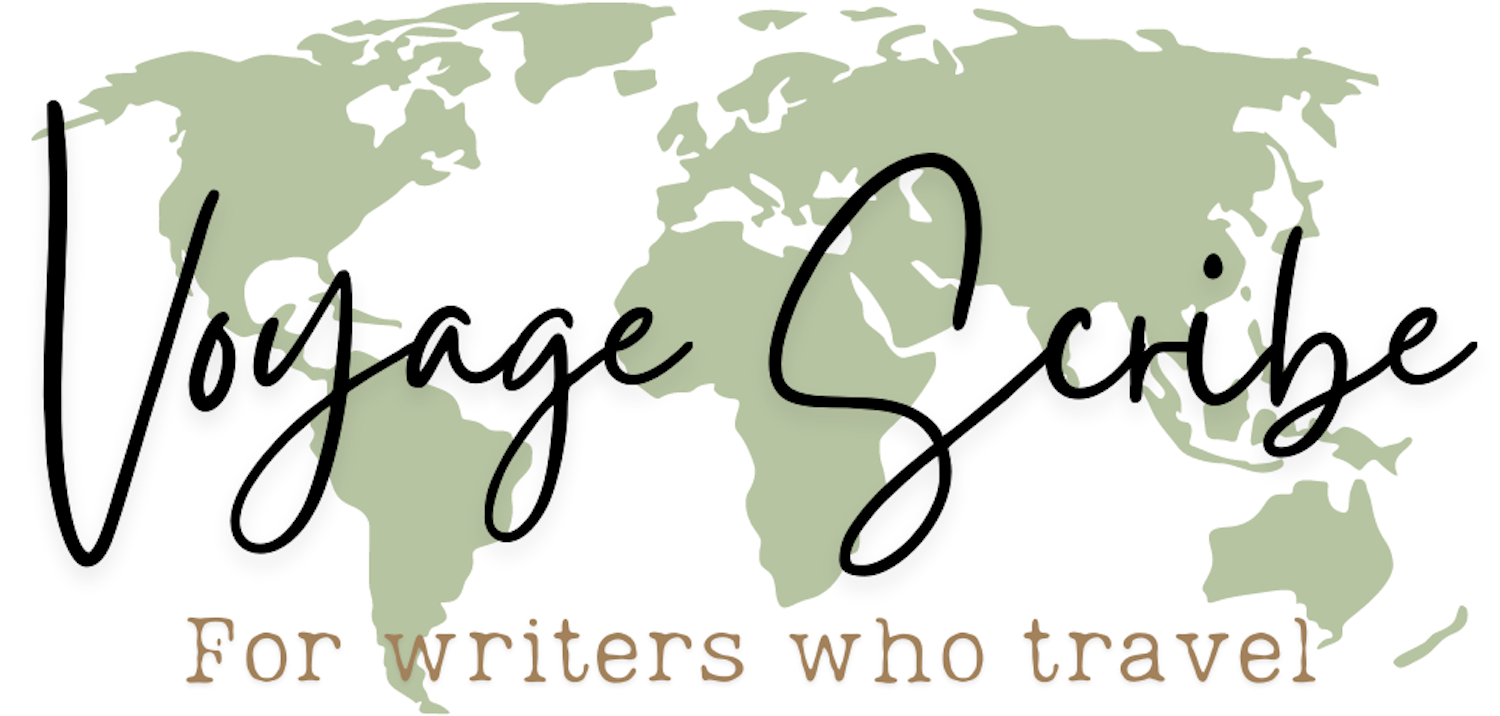
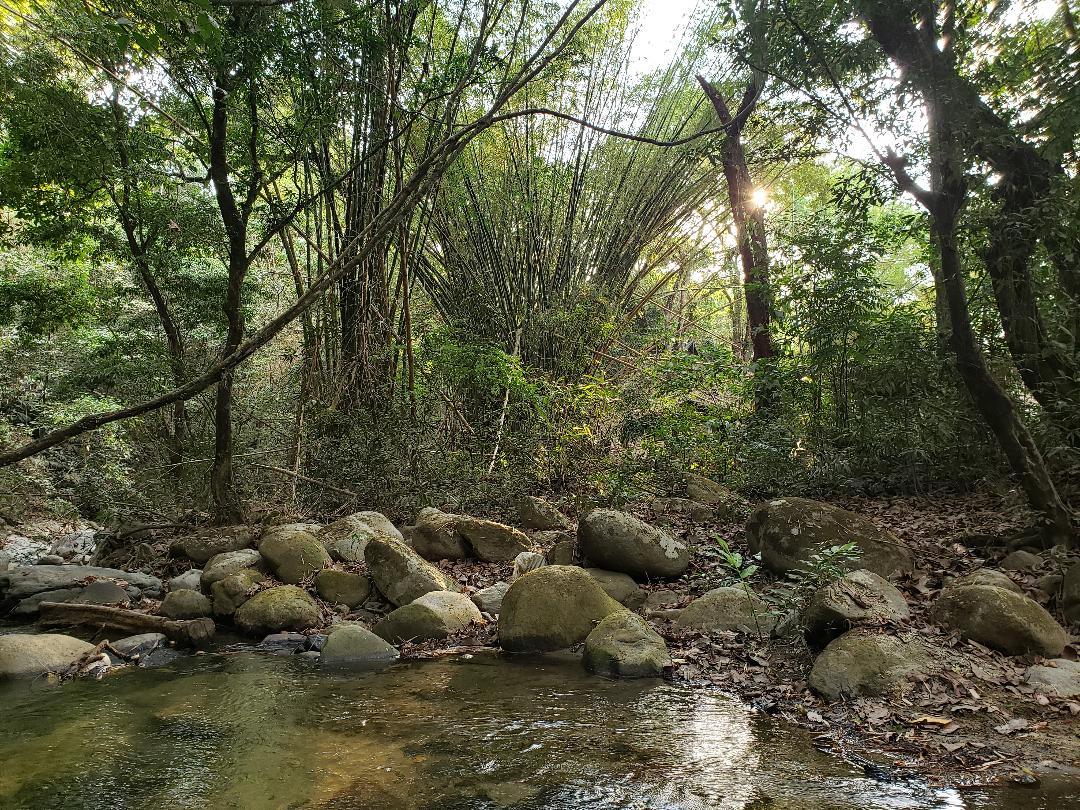
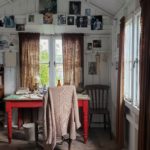

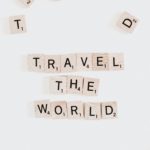


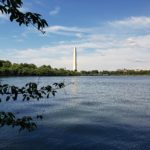

Wow, loved reading this! These are crazy times. I didn’t get stuck in another country, but I was on spring break when my college announced we’d be temporarily moving to online classes. I didn’t have any of my books, so I had to go back and get some of my stuff. Hopefully things will return to normal sooner rather than later 🙂
Fingers crossed for it! I hope the transition to online classes goes smoothly for you 🙂
I’m so glad you made it home safe. I know I would have been a nervous wreck if I would have been stuck in another country. It’s like you say…. By choice is completely different. I was in Thailand late Oct last year (where I met you 🙂 ) and had layovers in China coming back. They totalled less than 24 hrs but I am so thankful it was before the spread of the virus. I was looking forward to traveling again this year but obviously that is TBD.
Oh hey Sylvia! 😁 Hope everything’s going well with you and that this all clears up soon so you don’t have to cancel your travels! Stay safe 🙂
It’s good that you could manage to come out safely.hope things go normal soon
Wow, what a story. I’m so glad that you made it home safely. We found ourselves on a cruise ship while all of the craziness erupted in the United States, and we too were glad to not be home during the chaos. Stay safe!
Oh wow, I hope you made it home okay! I heard lots of cruise ships had issues with coronavirus outbreaks, so I hope you’re staying safe!
I’m glad you were able to make it out! It sounds like they were much more serious about what’s been going on there in Colombia, at least when compared to the United States. We’ve stayed put since the end of February here in San Diego, but it really has been crazy how things can change from day to day!
This is truly a weird time in history for everyone, especially avid travellers like us. It’s good that you’re content at where you are right now. Let’s look at the positive side and hope for the best 🙂
I hadn’t heard of a story like this, but I am glad that you managed to go home before things got worse. I am an introvert who loves being outside and travelling, but I think I am managing well staying at home because I am doing things that I did not have time before.
GOOD LORD! Did you sigh and scream and cry and kiss the ground upon arrival? I know I would have! Eventually, being out in the jungle, with its many insects, heat, and lack of wifi would make one insane!
I was oddly enough NOT traveling when US started talking about the virus here (early March). By Mid-March I decided to travel before it got out of control and I got stuck. My older roommate (Colombian no less) was playing news 24/7 and talking non-stop about “World wars” and how and when to wash your hands. She and my noisy noisy upstairs neighbor drove me mad! So I flew to a country I know well–Mexico. Going somewhere NEW would been lots of planning, reading about safe areas, learning languages…. and be tempted to sightsee. So better I went to somewhere I know exactly where to sleep, eat, and stay. Booked for 9 days. One thing I never do while traveling but I did was PACK MY LAPTOP: One, to work (eat up time so as to not be tempted to “sightsee” or visit friends, and two, I KNEW THERE WAS A CHANCE I COULD GET STUCK THERE…. And I would need my laptop!
Turns out my return flight was cancelled on a budget MX airline. I booked a one-way on Delta next day and it too was CANCELLED. I freaked and spoke to them for a hour to get a pattern of cancellations. I seemed that NYC wasnt allowing international arrivals. . . BUT ATLANTA WAS! So I booked ANOTHER ONE WAY TO NYC but with a stopover in Atlanta (change planes). IT WORKED! The issue was flying in directly to a state with closed int’l air traffic. At least I was smart enough to figure it out, but took an hour on the phone! I had to stay in the city two more days and my Airbnb had other guests so I found one on the fly. It had two enormous and narrow staircases and an elderly host who couldnt help with my heavy suitcase. But whatever! If I had been stuck in an unfamiliar country, somewhere I don’t speak the language, or somewhere remote, I would have gone INSANE!
Sounds like you had a really stressful experience too, but I’m glad you were able to find your way back home! I had my laptop too so could have worked if I got stuck, but I agree- I might have gone insane to be stuck in the middle of nowhere for several months!